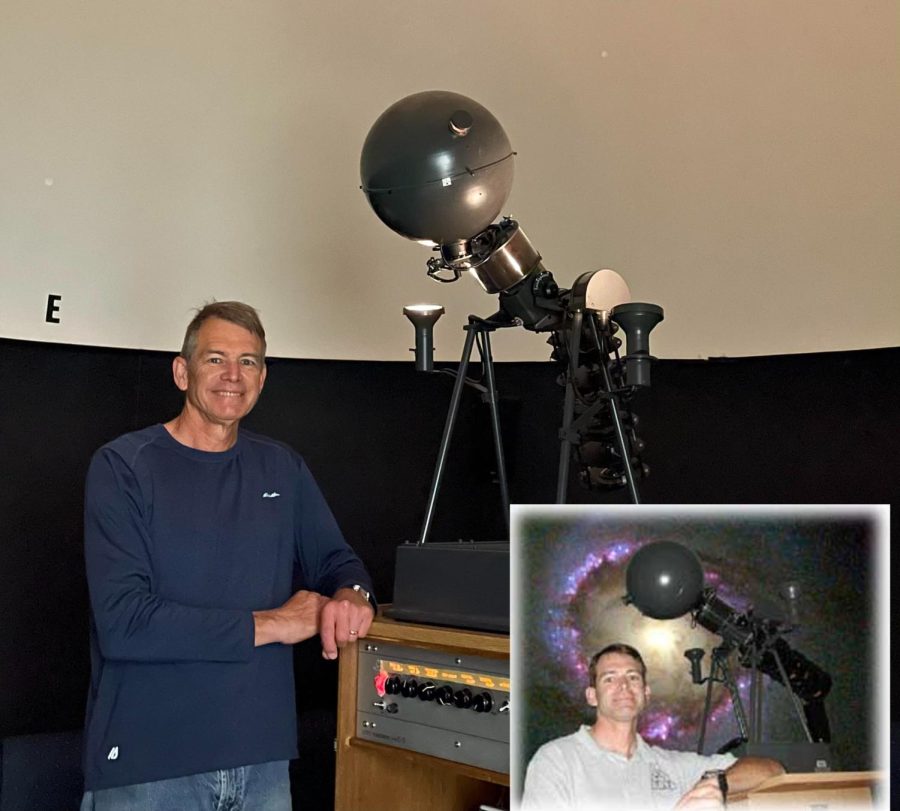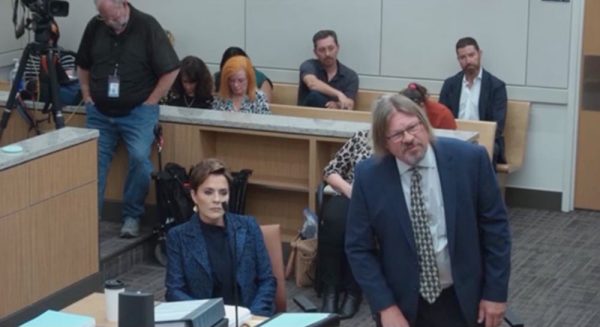Scottsdale Community College planetarium offers look into outer space, long-time director Steven Mutz ready to ‘pass the torch’
Mutz has operated facility since its construction
SCC planetarium director Steven Mutz in 2002 and now
March 1, 2023
One can journey to the stars for free at the Scottsdale Community College Planetarium, where various parts of outer space are explored and explained.
The SCC Planetarium, located at the Natural Science Building in Room 400, hosts a monthly free show that is open to the public.
Opened in the spring of 2002, the SCC Planetarium is the product of a jointly funded project from the Maricopa Community Colleges and the National Science Foundation. It is one of only four planetariums in the Phoenix metro area.
Professor Steve Mutz has been the planetarium director since its inception. Mutz oversaw the construction and has utilized the facility as a teaching aid for his class, along with offering free demonstrations to the public.
Mutz spoke to Northeast Valley News about some of the obstacles he and the program faced in its early days and how he has managed the planetarium throughout the years.
“Ours is pretty small, it was designed to fit in a classroom, without us having to build another building around it. This (the Natural Science Building) did not exist at the time,” Mutz said.
Professor Mutz goes on to explain the planetarium dimensions and how budget constraints along with a lack of space initially limited them.
“It’s a 5-meter diameter dome which can fit about 24 people and if we had gone to the next larger size, which can fit double that, the cost would have been a lot more,” Mutz said. “We didn’t have any space we could put it in, we would have had to build a building specifically for that, which I guess is what Mesa did”
Mutz is referring to the Mesa Community College Planetarium, which opened in 2008 It has an 8-meter diameter dome and can fit 52 people.
The SCC Planetarium uses a GOTO E-5 projector, an older model star ball that Mutz says they went with due to it being “more economical”.
Except for a major parts overhaul in 2019 the SCC planetarium still uses all its original equipment. Mutz states that with the parts overhaul the equipment itself “is in great shape”.
Tickets for the SCC Planetarium can be reserved online at Eventbrite.com.
Mutz added that he tries to tailor his exhibits based on what’s in the news.
Their latest show, “Europa: A Watery Moon” explored one of Jupiter’s moons, Europa. It is a strong candidate for alien life within our solar system since it holds an ocean of water below its hard ice surface.
The next public showing, “JWST Sees Possible Missing Links to Galaxy Evolution”, will be held on March 25 and will discuss recent James Webb Space Telescope observations of a group of primordial galaxies.
Professor Mutz will be retiring from SCC and the Planetarium this year, after a tenure of more than 20 years.
“By May of this semester we should find someone who I am going to pass the torch to,” Mutz said.
For more information on the SCC Planetarium, contact Professor Steven Mutz, at steven.mutz@scottsdalecc.edu.












